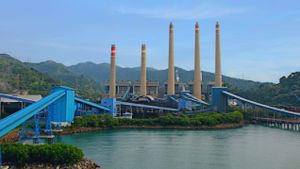JAKARTA - The National Research and Innovation Agency (BRIN) stated that the presence of the Lapan-A3 Satellite orbiting at an altitude of 505 kilometers above the earth's surface has produced image data covering an area of 538 million square kilometers.
Head of the BRIN Satellite Technology Research Center, Wahyudi Hasbi, said the satellite has a Line Image Space Application (LISA) multispectral camera device and has been operating for seven years.
"The A3 has produced image data of more than 538 million square kilometers with a resolution of 16 meters and a swab width of 100 kilometers," Wahyudi said in Jakarta, Antara, Thursday, June 22.
Lapan-A3 was first launched on June 22, 2016 from Sriharikota, India. The satellite is a mission control center through the Bumi Rancabungur Station in Bogor, West Java.
The main charge is the LISA multispectral camera which can monitor food crop growth phases. The second mission from Lapan-A3 is to create an image of RGB with a resolution of four meters and an image size of 7x7 kilometers.
The three satellites' mission is global maritime traffic monitoring. Then, another mission from Lapan-A3 is monitoring the earth's magnetic field for research purposes.
The satellite, the result of collaboration with the IPB, can monitor Indonesian waters. Through the Automatic Identification System (AIS), the Lapan-A3 satellite can monitor the movement of ships.
Currently, the satellite has collected more than 201 million AIS data through monitoring activities. During its operation, Lapan-A3, which is the second satellite made in Indonesia, was recorded to have collected spacecam image data of about 8 million square kilometers.
The Lapan-A3 satellite is also equipped with a magnetometer sensor for observations of the earth's magnetic field used to predict earthquakes. The sensor has also been operating for 15,888 hours.
Wahyudi revealed that the satellite has a lifetime longer than expected, because there is a role for operators who continue to maintain the health of satellites and operate.
"The success of Lapan-A3 beyond the estimated age of 3-4 years is supported by researchers who consistently conduct advanced satellite technology research," he concluded.
VOIR éGALEMENT:
The English, Chinese, Japanese, Arabic, and French versions are automatically generated by the AI. So there may still be inaccuracies in translating, please always see Indonesian as our main language. (system supported by DigitalSiber.id)













